| Hyundai Rotem J151 | |
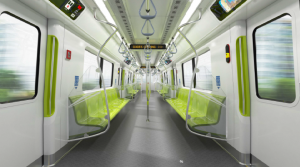 |
|
| In service | 2027 onwards |
| Manufacturer | Hyundai Rotem |
| Number built | 186 vehicles (62 trainsets) |
| Formation | 3 cars per trainset, provision for 4 cars per trainset DM–T–DM |
| Fleet number | 3001 – 3062 |
| Operator | Singapore One Rail (SBS Transit Rail and RATP Dev Asia Pacific Joint Venture) |
| Depot | Tengah |
| Line served | Jurong Region Line (JRL) |
| Technical Data | |
| Car body | Welded aluminum |
| Doors | 6 per car |
| Electrification | Third Rail |
| Track gauge | Standard Gauge (1435mm) |
The Hyundai Rotem J151 train is a light metro electric multiple unit (EMU) train operating on the upcoming Jurong Region Line (JRL). Projected to enter service in 2027, these are the JRL’s first generation of rolling stock.
Sixty-two (62) trains were procured, with each train formed of three cars. Trains were wholly designed and manufactured by Hyundai Rotem Company (HRC) in South Korea, and the company would also provide long-term service support to the future JRL operator as necessary.
The first trains arrived in Singapore in September 2025.
Background
Awarded to Korean rolling stock manufacturer firm Hyundai Rotem Company (HRC) in February 2020, Contract J151 (simply referred to as J151) for the procurement of rolling stock called for 62 trainsets of three cars each, at a total value of S$416.5 million. This is the first time that HRC is supplying new trains for the Singapore market.
Since the JRL infrastructure is built to support 4-car trains, the 3-car J151 trains are capable of being modified into 4-car trains in the future. HRC may also be required to provide long-term service support to the operator of the JRL, as was the case for rolling stock procurement on other train lines.
Features
The J151 trains for the JRL have carriages that are smaller than that of existing heavy rail lines, allowing for greater manoeuvrability on tracks. Each train car will be 18.6 metres in length and 2.75 metres in width, as compared to 23.6 m by 3.2 m on the Circle Line.
To facilitate easy boarding and alighting, each train car will have three wide doors on each side. At a width of 1.5 metres, these doors are wider than trains on existing MRT lines. Trains will also be designed with spaces for wheelchairs and strollers.
On the technical side, JRL trains will be fitted with an onboard backup power supply that allows the train to be driven to the nearest station should there be a power failure, thus improving accident recovery time. JRL trains are also equipped with advanced condition monitoring and diagnostic systems to detect train faults, with some trains being additionally equipped with an Automated Track Inspection system to monitor the real-time condition of the running rail for defects. This enables the rail operator to adopt a more preventive and predictive maintenance regime.
JRL trains are also designed around various existing suppliers of sub-systems (such as train doors) of other trains in Singapore, which allows for a greater commonality of spare parts, and enables more efficient and responsive maintenance support.
Tender
The tender for the Contract J151 Trains closed on 13 June 2019 at 12:00 pm, after being extended multiple times from 8 April 2019, 6 May 2019 and 30 May 2019.
As of the tender closing time, participating companies were:
| S/N | Tenderer | Tender Amount |
| 1 | Alstom Transporte S.A. – Alstom Transport (S) Pte Ltd Consortium | SGD 566,491,507.00 |
| 2 | Bombardier (Singapore) Pte Ltd | SGD 546,619,188.80 |
| 3 | Hyundai Rotem Company | SGD 397,800,000.00* |
| 4 | Kawasaki Heavy Industries, Ltd. – CRRC Qingdao Sifang Co., Ltd. – Kawasaki Heavy Industries (Singapore) Pte. Ltd. – Singapore CRRC Sifang Railway Vehicles Service Pte. Ltd. Consortium | SGD 446,028,000.00 |
Notes:
- * – Discrepancy between words & figure
- The eventual amount awarded to Hyundai Rotem Company as announced by LTA is SGD 416,499,000.00
Train Formation
Every car is identified by a five digit number ranging from 3001x to 3062x, where the last digit x is carriage identifier.
Each 3-car train (Formation: DM1–T–DM2) comprises two Drive Motor cars (DM1 and DM2) at each end, and an unpowered Trailer Car (T) in the middle.
Mock-up Train Display & Online Survey
In July 2021, a mock-up cabin of a Hyundai Rotem J151 Train was displayed at the Land Transport Authority’s Hampshire Office. Members of the public may vote on their preferred designs & colour scheme through an online form by 20 August 2021.
Based on the train delivered to Singapore in September 2025:
- None of the options presented were featured in the actual train (No black edge at all)
- The B1 design for the door pillar colour scheme was chosen
Virtual Tour Video
Freight Transport in South Korea
In May 2023, one completed J151 Train was spotted on haul in South Korea.
Gallery
See Also
References
- Smaller train cars for Jurong Region Line to navigate tight curves in built-up areas – The Straits Times
- Contract J151 Schedule of Tenders Received – LTA
- Korean trains with battery propulsion for Jurong Region Line – Straits Times
- Hyundai Rotem Company Awarded Contract for 62 Jurong Region Line Trains – LTA
- JRL Train Mock-Up Online Public Engagement – LTA
Back to Rolling Stock

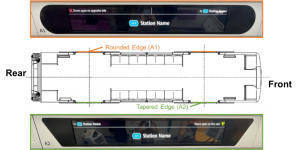
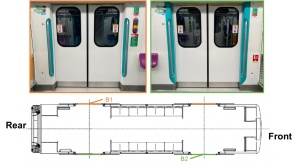
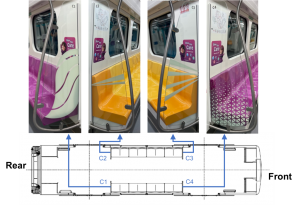
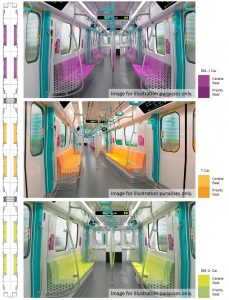
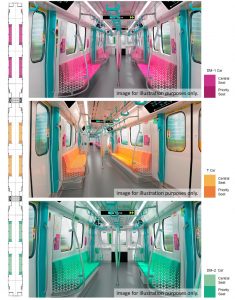
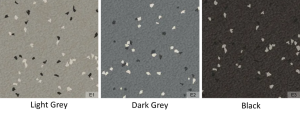
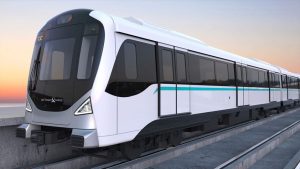
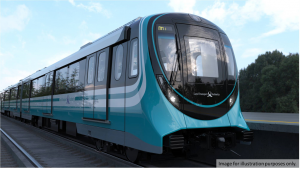
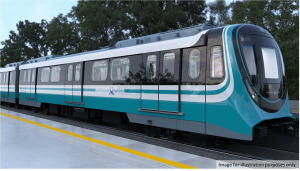
I think Bombardier will win this contract, the newer rolling stock are done by them. The Bombardiers model are pretty comfortable to ride on, so why not?
Jurong Region line will use the same rolling stock as the Pujiang line in Shanghai, China. Except it is longer.
Of the 4 bidders in this contract, only Bombardier has made rubber-tyred trains before. So it’s obvious that Bombardier will win the contract, and looking at their latest model, the rolling stock will be the Innovia APM 300.
(Bear in mind, JRL runs along residential area. Trains must be as quiet as possible. Thus, only rubber-tyred trains.)
(And Bombardier is the only one that has rubber-tyred trains. Kawasaki is the other one, but in this tender, they partner with CRRC, which has no rubber-tyred trains. So, only Bombardier, with their Innovia APM 300.)
(Why have a train that only uses Kawasaki design but actually produced by CRRC, which has never done rubber-tyred trains before, when we can have a train that uses Bombardier design and is produced entirely by Bombardier? The quality in procurement now and warranty later is assured by Bombardier, but not by Kawasaki-CRRC, which is actually just CRRC in the name of Kawasaki.)
Anyway, the Innovia APM 300 in Pujiang line also uses 4 cars per train, which is the eventual formation of the Jurong Region line rolling stock.
So, most probably the systems and all other technical specifications are the same as the Pujiang line in Shanghai, China.
The only difference is the length. Innovia APM 300 length is 12.8m, Jurong Region line rolling stock is 18.6m. But this difference is minor as the dimensions can be customised by Bombardier to meet the client’s different requirements.
I have done an analysis of the JRL tendering and other aspects of the JRL, in PowerPoint and exported it into video.
Link to the video is as follows:
https://youtu.be/SUuViYW05_o
Lucky for us, the Bombardier Innovia APM 300 will be introduced into the Bukit Panjang LRT line from next year onwards. We can get to experience the JRL rolling stock from next year onwards. Yay.
This is a major development to the Jurong Region Line, as we would roughly know what is the rolling stock that would run on the Jurong Region Line.
After all, the Jurong Region Line trains would have a smaller width of 2.75m.
If it is Alstom, it is the “AM5-M2 and AM4-M4”, similar to the one used on the Line 2 and Line 4 in Budapest, Hungary. (width = 2.78m)
If it is Bombardier, it is the “Bombardier Innovia APM 256”, similar to the one used on the Wenhu Line in Taiwan, China. (width = 2.56m)
If it is Hyundai Rotem, it is the “Diesel Multiple Unit”, similar to the one used on the Philippine National Railways in the Philippines. (width = 2.85m)
If it is Kawasaki Heavy Industries – CRRC Qingdao Sifang, it is similar to the “Tokyo Metro 15000 series”, used on the Tokyo Metro Tōzai Line in Tokyo, Japan. (width = 2.85m)
Honestly, given the width requirement, only the “Bombardier Innovia APM 256” meets the requirement.
Also, the Wenhu Line (where the “Bombardier Innovia APM 256” runs on) in Taiwan, China is about the same length (25.1km) and has the same number of stations (24) as the Jurong Region Line (24km and 24 stations), and uses up to 4 cars per train configuration.
The Wenhu Line is also built on densely populated areas, and has tight curves in its alignment. Using the same train model as the Wenhu Line on the Jurong Region Line may be the most appropriate solution.
So for this tender, I would say it is obviously Bombardier who will win the tender, and the train model is probably the “Bombardier Innovia APM 256” used on the Wenhu Line in Taiwan, China.
Too early to tell or speculate?
Firstly, the JRL trains will all be 3 cars long and each carriage will be 18m long by 2.75m wide. The wenhu line carriages are much shorter and narrower (13.7m x 2.56m) than what the LTA intends to look for. The trains will also have to be equipped with gangways, so the chances of APM trains being used is zero. Line length and station count being similar to other systems overseas DOES NOT mean the LTA must use the same system as Taipei.
Secondly, we won’t be using Diesel Multiple Units if Hyundai Rotem wins. The JRL will be powered by 750V DC third rail.
And lastly, the JRL could most likely be a rubber tyre system as it close to houses and has many tight turns. It is unlikely that steel wheel trains will be used unless there are some special modifications made to reduce noise but even so, the reduction in noise won’t be that much too compared to rubber tyre trains. So if Alstom were to win, it would most likely be supplying trains similar to the new MP14 trains of Paris metro.
For Jurong Region Line , both Bombardier and Alstom have the necessary experience and expertise to produce rubber tyred trains with walk thru gangways so it ‘s doesn’t have to an APM. APM is not considered an MRT system so it ‘s definitely out. Such systems are already operational in Paris , Lausanne (these two are automated) as well as Montreal just to name whereas Kawasaki and Hyundai is just trying their luck since they have no such relevant experience.
Kawasaki has the Sapporo Subway. Not much, but better than nothing I guess.
I don’t think so. Let me have an opinion.
For first, the Wenhu Line Bombardier Innovia APM 256 or the Matra (Siemens) VAL 256 (13.78m * 2.56m) is too small for JRL use (18.6m * 2.75m). Additionally, the Wenhu Line do not pair together (no gangway), and have 4 carriages. JRL stock needs only 3 carriages connected together via a gangway. Chances of using Bombardier APM 256 is zero, considering the fact that there is Bukit Panjang LRT using Bombardier APM stock (APM 100, 300). Additionally, LTA might not choose the Bombardier stock unless BPLRT is with JRL (seriously not feasible).
Secondly, do not seriously think that DMU will be used when LTA chooses Hyundai Rotem to build the train.
Apparently the JRL will be similar to the Kelana Jaya and Sri Petaling LRT lines in KL.
I am Hoping For Either Siemens Or Bombardier To Win.